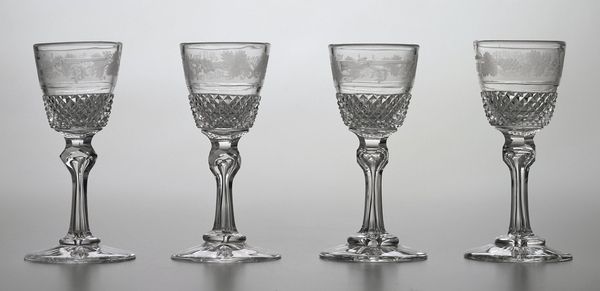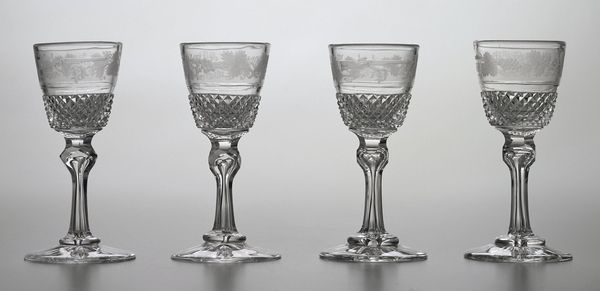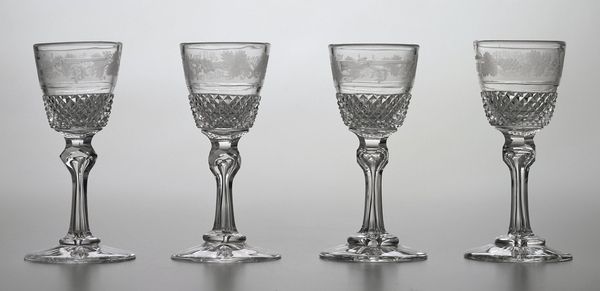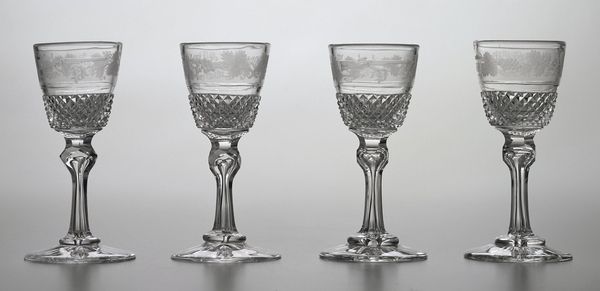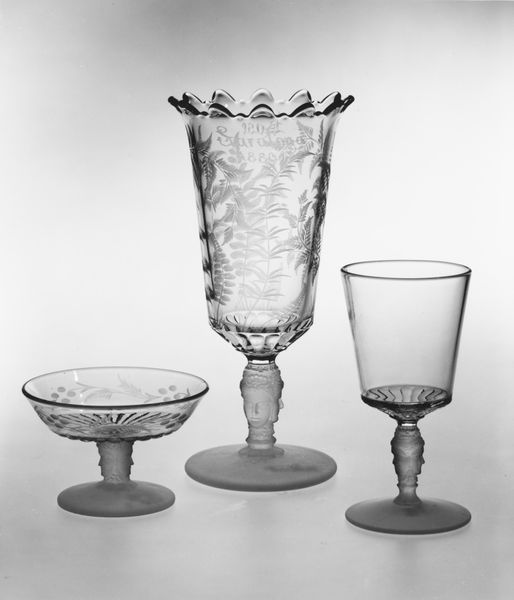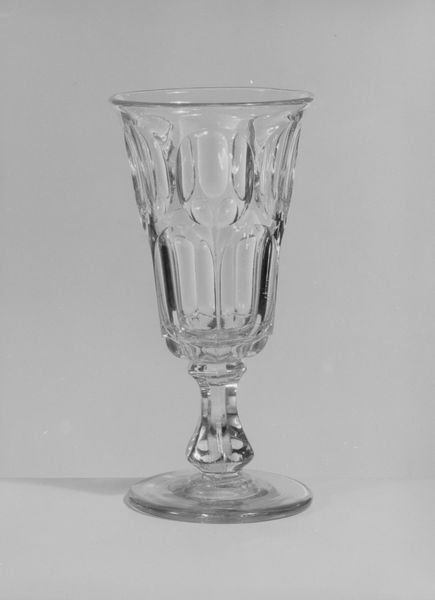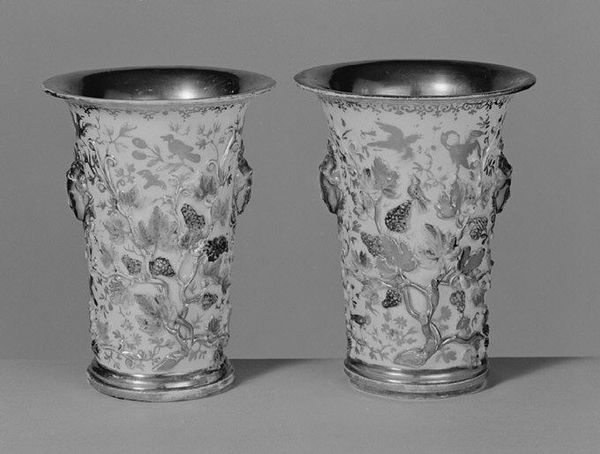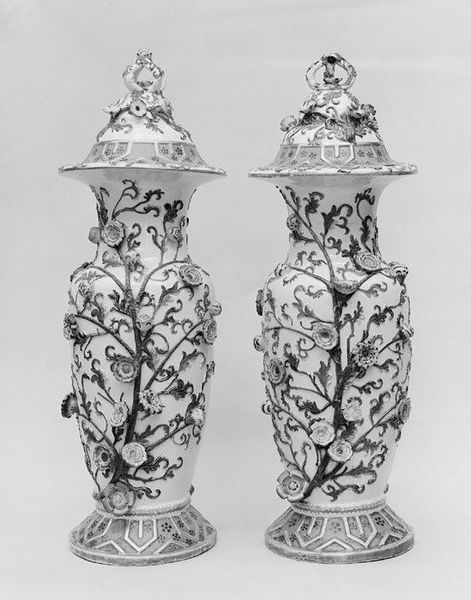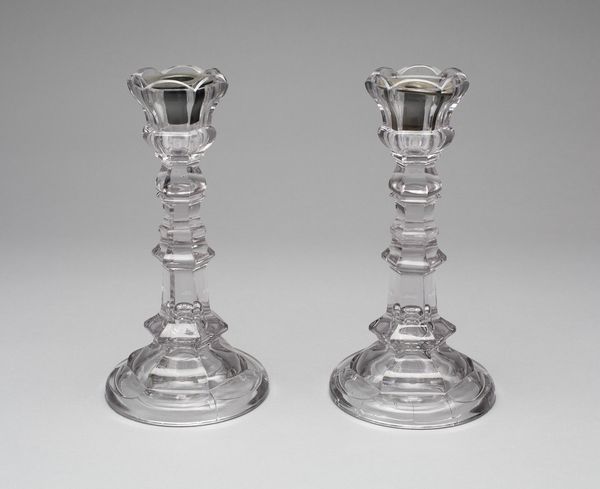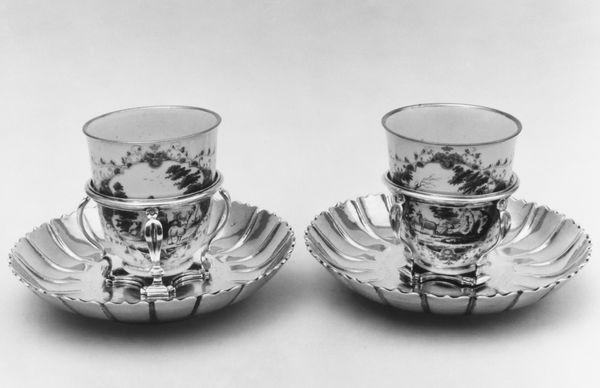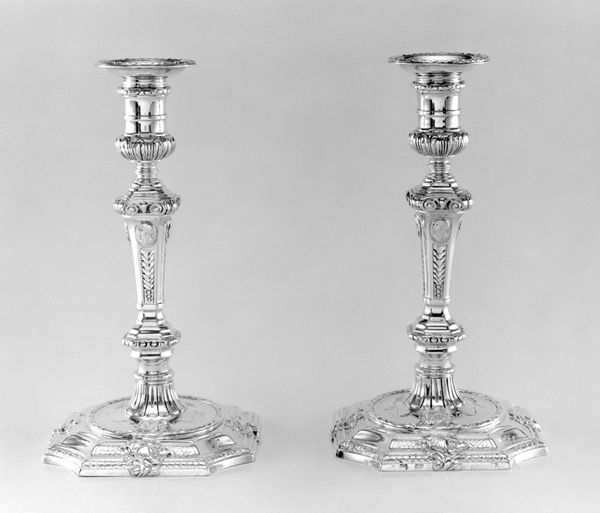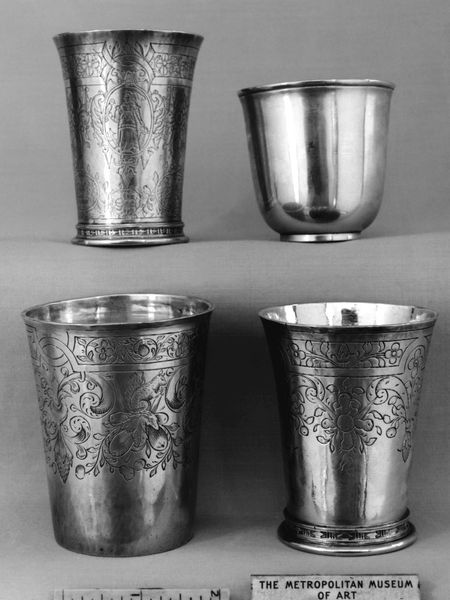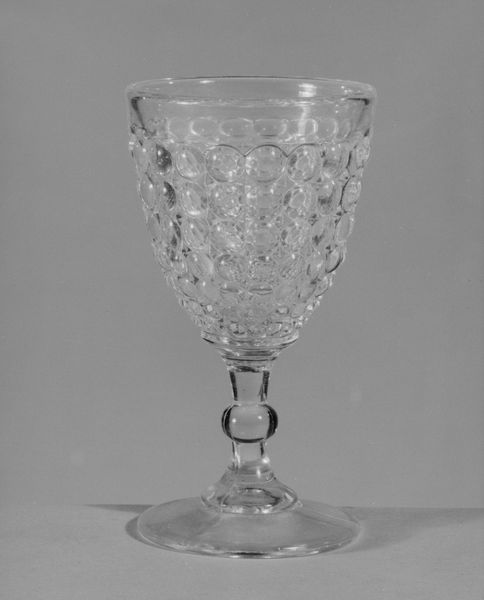
Dimensions: Overall: 6 3/8 × 3 1/16 in. (16.2 × 7.8 cm)
Copyright: Public Domain
Editor: Here we have a pair of standing cups, made sometime between 1840 and 1855 by Harrachsche Hütte. They are crafted from glass, almost like miniature sculptures. They seem quite delicate and ornate. What strikes you most about them? Curator: It’s important to consider these objects in the context of 19th-century production. Glassware like this moved beyond purely functional objects to become elaborate displays of skill, indicative of industrial advancements and accessible luxury for the burgeoning middle class. Look closely at the craftsmanship – the way the glass is blown and the detail of the painted decoration. How does that impact our understanding of the piece? Editor: It definitely makes me think about the labor involved, both the skilled artisans creating the glass and the ones adding the intricate details. Was there a shift in how these artisans were viewed during this period? Curator: Absolutely. The Industrial Revolution transformed the roles of these makers. They were becoming less like independent artists and more like factory workers, contributing a specific part to a larger process. Mass production versus artistry…where does that leave us in how we consume this art? Editor: So these cups become symbols of a changing economy, where artistry and industry start to blur, and new social classes began to access luxury goods. They reflect the shift in the means of production, away from individual artisans toward industrial workshops. Curator: Precisely. The very materiality of these cups, the glass itself, speaks volumes about technological advancements, labor conditions, and consumer aspirations of the era. What did you make of all of that? Editor: It’s fascinating how these delicate cups encapsulate so much about the social and economic changes of their time! I’ll never look at glassware the same way again.
Comments
No comments
Be the first to comment and join the conversation on the ultimate creative platform.
